The Best Justice League
August 31, 2011 in Editorial, Top
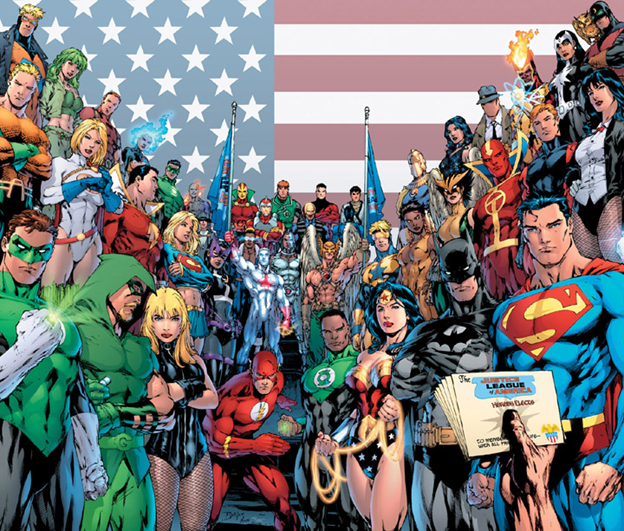
Today, DC comics, the owner of such venerable characters as Batman, Superman, Wonder Woman and Green Lantern, completes the reboot of its universe, restarting all of its comic book titles with issue #1.
One of the comic series to be restarted will be The Justice League of America, the DC Comics Superhero Team that consists of the most popular DC characters. Over the past fifty years The Justice League of America has had a variety of team rosters to help fight against crime. The DC reboot has prompted analysis about which version of The Justice League of America was the best. This analysis has generally focused on the quality of the story telling and the art work over the history of the series.
This is a mistake. It should be obvious to everybody that the only true way to decide which version of the JLA was the most successful is to look at the effect that the various incarnations of the team had on the crime rate in the United States. Using crime data from the FBI, Centives decided to find out, once and for all, which version of The Justice League of America was the best. Here is what we found:
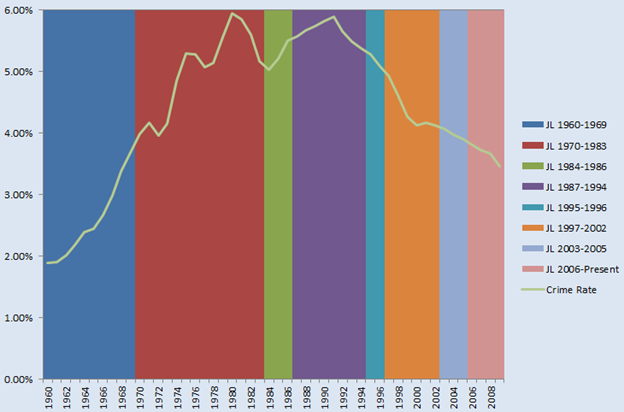
1960-1969 – The Original League
The first version of the league was a total disaster. In the ten years that the original league operated the per capita crime rate in the United States almost doubled from 1.89% to 3.68%. This averages out to a 0.20% increase in crime for every year that this version of the league operated, and this is by far the worst record among all incarnations of The Justice League of America.
Could it perhaps be argued that the League was formed because of the rapidly rising crime rate, and so should not be held responsible for the burst in criminal activity? It’s possible but unlikely. If this were the case then one would expect the crime rate to accelerate in the early years of the league, and then to level off as the League became an effective and more experienced force for good. Instead the opposite trend is seen. In the first six years that the league operated the crime rate stayed fairly stable. In the next four years the crime rate saw record breaking increases. Realizing that something had gone horribly wrong, the league relocated to a satellite orbiting the earth, abandoning the planet that they had failed.
1970-1983 – The Satellite League
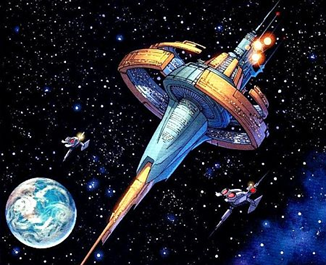
The new vantage point above the United States seemed to aid the team in its mission. While the crime rate continued to climb, it only averaged a 0.11% increase per year. In 1972 there was the first decrease in the crime rate in the history of The Justice League. In fact, crime decreased for six of the fourteen years that this league operated. Overall the crime rate rose from 3.98% to 5.18% under this version of the league.
This relative success perhaps led to complacency among the members of the league. Three years of falling crime rates might have lulled the team into a false sense of security. The world’s heroes failed to respond to a Martian attack and Aquaman was forced to disband the league.
1984-1986 – The Detroit League
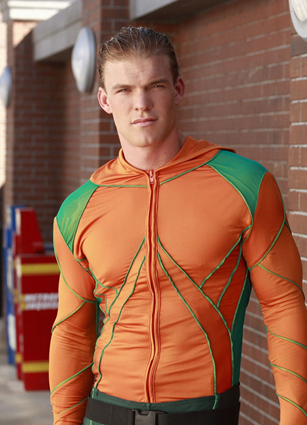
Aquaman is widely considered one of the weakest characters in the DC Universe. And Detroit is an unlikely location for a team of the world’s best superheroes. Yet the Justice League did surprisingly well operating from their Detroit base under the leadership of Aquaman, seeing a fall in crime rates in the first year of the squad’s operation. Perhaps feeling confident that the team was on the right track, Aquaman decided to leave the league and hand over leadership to the Martian Manhunter so that he could spend more time with his family (seriously.) Yet the Manhunter so completely mismanaged the group that a string of high profile deaths forced the team to disband just two short years into his leadership. The Martian erased the gains that Aquaman had made in the war against crime and the crime rate rose from 5.03% to 5.50% under this vision of the league.
1987-1994 – Justice League International
Perhaps mindful of the increasing prominence of globalization the team dropped “America” from its name and re-branded itself as Justice League International. One would think that this more global focus would mean less time to fight crime in the United States, and at first this seemed to be the case. Crime rates began to rapidly rise across the country. Yet the league did not give up, and eventually seem to have gotten better at their job. The crime rate began to fall and over the eight year tenure of this league, crime remained fairly stable. Overall this was the first ever Justice League that left the country with less crime when it disbanded (5.37%) than when it had initially formed (5.58%).
The team was so successful that it began to launch region specific franchises such as Justice League Europe.
1995-1996 – Extreme Justice
While short lived, this version of the team continued to build upon the success of Justice League International. In the two years that the team operated, crime rates fell from 5.37% to 5.09%. The credit goes to the leader of the team, Captain Atom, and perhaps the league should consider having him play a more central role in the future.
1997-2002 – Justice League Lunar
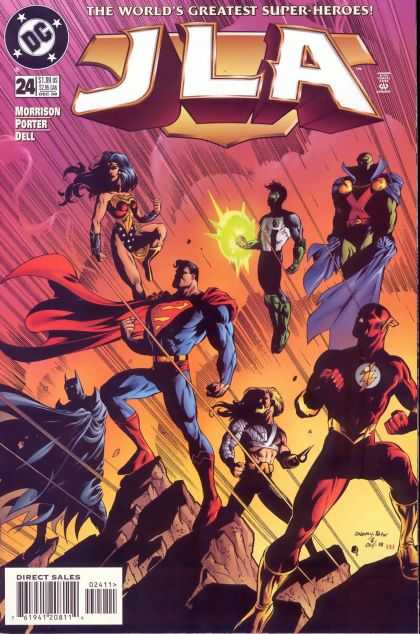
Then in 1997 began the glory years of the JLA. The team saw a return to its “Justice League of America” designation and staged a return to space with new headquarters on the moon. The renewed focus on the United States and the superior vantage point led to unprecedented drops in the crime rate. On average it decreased by 0.16% every year that this league was operational, and over its six year span, crime rates plummeted from 5.09% to 4.13%. Somewhat surprisingly, this is also the best rated incarnation of the league among those who look at such trivialities as comic book story direction and creative design. This just goes to show that quality and class are evident across all metrics of success.
2003-2005 – The Replacement League
This short lived version of the league failed to continue its predecessor’s success. Crime rates in America still fell, but from just 4.13% to 3.90% over three years. It is perhaps worth mentioning that Aquaman was not a member of this league lending further evidence to the possibility that he’s the most underrated member of the coalition.
2006-Present
The FBI has yet to release data on crime rates beyond 2009, but the evidence so far suggests that the Justice League of America has plodded along with a fair amount of success. Crime rates fell from 3.90% to 3.47% and this trend is likely to continue. This happens to be the first version of the team to be led by a female, and Black Canary deserves credit for doing a good job.
The Future…?
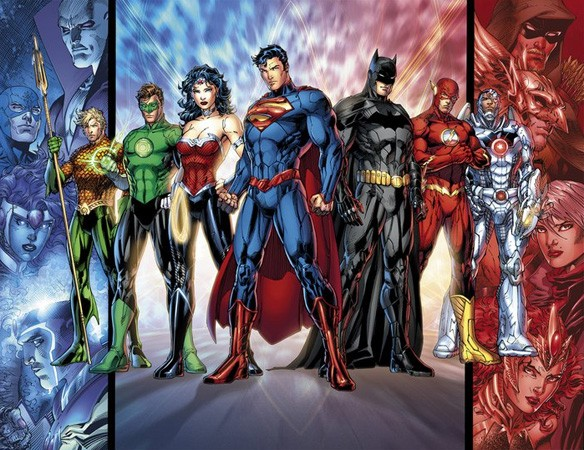
Since the 1987 version of the Justice League of America, the team has been quite successful. It will be up to the new line up of superheroes to continue this trend. They must aim to avoid the debacle that was the initial team formed in 1960; and should strive to emulate the success of the 1997 roster. The presence of Aquaman on the team may bother the fans, but might bode well for America.
Great article, I will enjoy fresh news from you.
Aquaman? Please. What would really be interesting is to find out what happens when Batman leaves the league. It would probably just sky rocket.